https://weightliftingforpower.com/forearm-exercises-for-strength/
Forearm Exercises For Strength
Forearms Exercises for strength are more important than you might think. They’re not just for bodybuilders or athletes; they play a crucial role in your everyday movements and activities. Whether you’re opening a jar or carrying groceries, those muscles help in gripping, lifting, and stabilizing different items you handle on a daily basis.
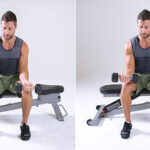 Forearms are made up of a complex network of muscles, tendons, and ligaments. These muscles work together to allow wrist and finger motion, essential for various tasks. The flexor and extensor muscles, in particular, support your wrist and fingers, enabling you to perform actions like typing or swinging a golf club with ease.
Forearms are made up of a complex network of muscles, tendons, and ligaments. These muscles work together to allow wrist and finger motion, essential for various tasks. The flexor and extensor muscles, in particular, support your wrist and fingers, enabling you to perform actions like typing or swinging a golf club with ease.
Having strong forearms contributes to overall upper body strength, playing a supporting role in exercises like deadlifts, pull-ups, or even bench presses. When your forearms are well-developed, they help you maintain better grip strength, which can significantly enhance your lifting potential and endurance.
There’s a common myth that forearm exercises won’t make much of a difference, but that’s far from true. Investing time in developing these muscles can lead to improved performance in sports and reduce the risk of injuries. It’s not just about appearance; it’s about functionality and efficiency in movement.
Top Forearm Exercises for Maximum Strength
Building strong forearms involves more than just picking up a few weights. It’s all about choosing the right exercises that challenge those muscles effectively. Wrist curls are a great start, where you focus on lifting a barbell or dumbbell while keeping your forearms flat on a surface. This targets the flexor muscles, ensuring you build strength where it matters.
Reverse wrist curls flip the focus to the extensor muscles. By curling the weight upwards with the back of your wrists toward the sky, you’re engaging muscles that often get overlooked. Farmer’s walks, on the other hand, are a whole different ball game. Simply carrying heavy weights at your sides as you walk around provides a real-world challenge to your grip strength and overall forearm robustness.
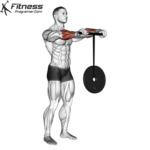
Proper form and technique can’t be overstressed. Avoiding injuries is key, so ensure your movements are controlled and deliberate. This isn’t about lifting the heaviest weight possible, but about making sure your muscles are doing the work, not momentum.
For those just starting out, begin with lighter weights and fewer repetitions, gradually adding more as your strength builds. More seasoned exercisers might incorporate variations or increase intensity to keep challenging those muscles. Remember to mix it up to keep your workouts fresh and fun.
Consider visual guides or instructional videos to make sure you’re getting each movement right. Visual aids can offer clarity and give you confidence that you’re working out effectively.
Incorporating Forearm Exercises Into Your Routine
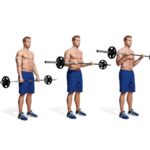
Getting the most out of your forearm workouts involves finding the right balance in terms of frequency and duration. Training these muscles two to three times a week is typically enough to see progress. It’s crucial to give them time to rest and recover, just like any other muscle group.
Integrating your forearm exercises into a broader fitness plan can help you achieve better results. Pairing them with upper body or even core workouts makes for a well-rounded routine. For instance, you might add wrist curls after a session of bench presses or deadlifts when your forearms are already engaged.
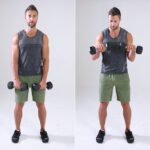

Don’t overlook the importance of a good warm-up. Simple movements like wrist rotations or light stretching can prepare your muscles and help prevent injuries. Similarly, cooling down with more stretches or using a foam roller can aid in recovery and maintain flexibility.
Staying motivated is key to any fitness journey. Keep track of your performance and celebrate small victories to stay encouraged. Whether it’s lifting an extra pound or holding a farmer’s walk a few seconds longer, acknowledging these achievements keeps progress in focus.
Adapting your routine as you advance is part of the process. Increase weight gradually or try new exercises to challenge muscles and sustain growth. Variety not only maintains interest but also works different parts of the forearm, ensuring comprehensive development.
Addressing Common Challenges and Offering Solutions
Hitting a few roadblocks while working on forearm strength is normal. Overtraining is one pitfall to watch out for. If you experience persistent soreness or fatigue, your muscles might need more rest. Listen to your body and don’t shy away from giving it a break when needed.
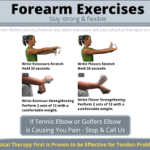
Another common concern revolves around muscle imbalances. If certain exercises feel awkward or one arm feels stronger than the other, focus on isolated exercises for the weaker side. Balancing strength not only improves performance but also minimizes the risk of injury.
There’s often confusion around the relationship between forearm size and strength. Bigger isn’t always better. Focus on capability and endurance rather than just size, developing functional strength that supports various activities.
Choosing the right tools can make a real difference. Adjustable dumbbells or resistance bands offer versatility and can adapt as you grow stronger. Find what works best for you and keep experimenting with different equipment to maintain interest and adapt to your progress.
Real-life stories can be incredibly motivating. Hearing about others who’ve overcome similar challenges or seen tangible results from their efforts can be inspiring. Whether it’s a personal mentor or community support, sharing and listening to experiences can boost confidence and drive.
https://images.app.goo.gl/XK7ZRMzHdDtEUckk6
